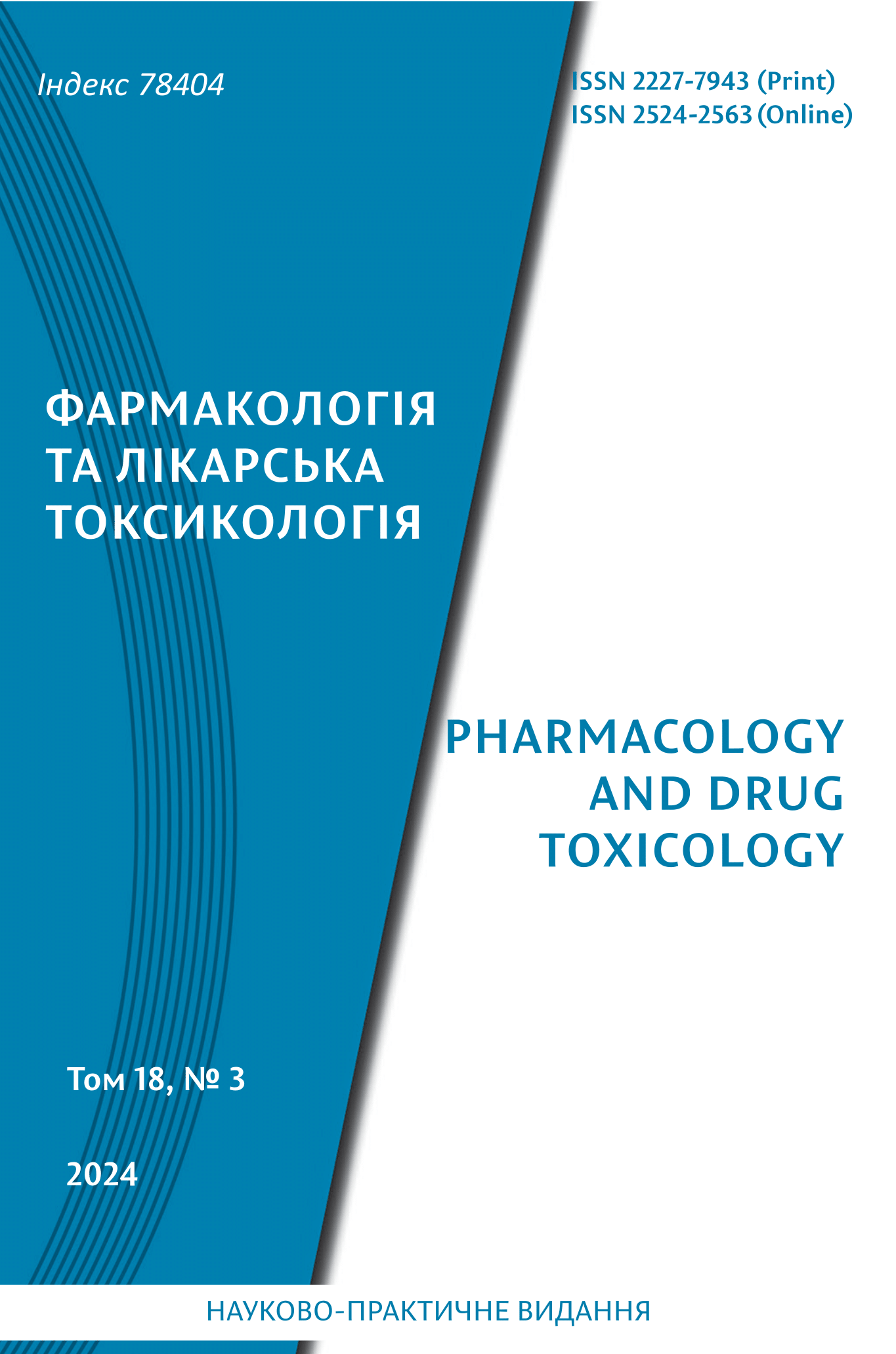Abstract
Relevancy of question, presented in the article, lies in expediency of adequate comparative analysis of results of pre-clinic trials of toxicometric characteristics in potential drugs, depending on their chemical structure, with attempts to determine pharmacophore of the compound – the leader in the line of studied compounds.
On the stage of comparative experimental toxicometry, a line of first synthesized coordinational compounds of germanium with different biometals (magnesium (Mg), manganese (Mn), cobalt (Co), nickel (Ni), cuprum (Cu), zinc (Zn) are being studied in «structure – toxicity» format. They are regarded as potential treatment and prevention drugs for pharmacological correction of oxygen deficient states of body.
The aim of study – to conduct a complex, comparative analysis of «structure – toxicity» ratio of first synthesized biometallic dihydroxo-μ-bis(gluconato)digermanates(IV) 3d-metals.
Studies were conducted on adult male mice, which have underwent all necessary quarantine procedures in accordance with bioethics requirements.
Toxicometric experiment was conducted with 6 first synthesized biometallic dihydroxo-μ-bis(gluconato) digermanates(IV) with different essential microelements (Zn, Cu, Mn, Mg, Co, Ni), administrered intraperitoneal in different doses. All studied compounds are water-soluble. Toxicity of coordinational germanium compounds with biometals was determined by the values of LD50 and their confidence intervals. During experiment clinical manifestations of toxic activity were registered, and class of the danger has been assigned for each of studied compound.
Different values of toxicity and danger for each of studied compounds have been experimentally proven. Particularly it was established, that the most toxic and dangerous compound is copper-containing compound, LD50 of which is 25,8 (22 ÷ 30) mg/kg, and it corresponds to III danger class «moderately toxic», and the least toxic compound is the one, which contains magnesium, as it’s value of LD50 is >1580 mg/kg and is considered «practically non-toxic» compound (V danger class).
Range of coordinational compounds of germanium with different biometals, based on toxicometric data obtained in ascending LD50 value has following appearance: Cu > Ni > Zn > Co > Mn > Mg.
Thus, possible mechanisms of toxic action of studied compounds may depend on a microelement, included in their structure.
